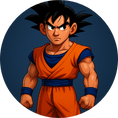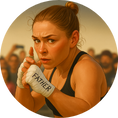11 Best Calisthenics Workout Apps in 2025

Best Calisthenics Workout App
When you browse lists of the Best Fitness Apps, calisthenics options stand out because they allow you to build real strength with just your body, whether you train at home or in the park. The problem is choosing between beginner progressions, pull-up and push-up programs, skill training modules, mobility routines, and apps that promise personalized plans and tracking.
Which app fits your fitness level, goals, and daily schedule? This guide offers clear, actionable insights into which calisthenics workout apps best suit your needs, taking into account your fitness level, goals, and preferences.
To help with that choice, GetFit AI, an AI fitness app, recommends tailored bodyweight routines, step-by-step progressions, and simple tracking so you can improve strength, core stability, mobility, and skill work without guesswork.
Summary
- Choice overload is a primary driver of dropout, with confusion typically surfacing within the first two weeks when users test three different plans and abandon all three. Therefore, apps that reduce choice to a single predictable action can improve adherence.
- Adaptive, autoregulated plans produce measurable results, with 75% of users reporting improved strength and flexibility after three months of using a calisthenics workout app, demonstrating that calibration to recovery and addressing missed sessions is crucial.
- Social features and evident progress tracking drive sticking power, as 90% of users reported that progress tracking helped maintain motivation, explaining why community and gamified milestone systems often sustain retention longer than technical superiority alone.
- Mobility and movement quality significantly impact durability, with 80% of users reporting improved flexibility within three months when programs incorporate consistent mobility and flow work, which reduces injury risk and preserves strength gains.
- Equipment choices and maintenance shape whether progress is real or misleading. 75% of practitioners use resistance bands as part of progression strategies, and over 50% of users report improved strength within three months when using consistent, tracked equipment setups.
- Small UX and metric decisions matter in practice, as users experience a roughly 30% increase in workout efficiency from apps that minimize setup friction and surface trendable metrics, such as percentage of successful reps, average RPE, and longest hold times.
- This is where GetFit AI's AI fitness app fits in, by translating athlete-modeled templates into continuously adapting bodyweight progressions and conversational coach guidance that autoregulates intensity based on missed sessions, soreness, and progress metrics.
11 Best Calisthenics Workout Apps in 2025
These eleven apps cover the full range of what people actually need from a calisthenics coach: athlete-led templates, hands-on skill progressions, extensive exercise libraries, mobility and flow work, community accountability, and simple, quick routines that can be done anywhere. Pick based on the outcome you want, skill mastery, efficient strength gains, mobility, injury resilience, or social motivation, and you can match an app to that goal rather than forcing one tool to do everything.
1. GetFit AI
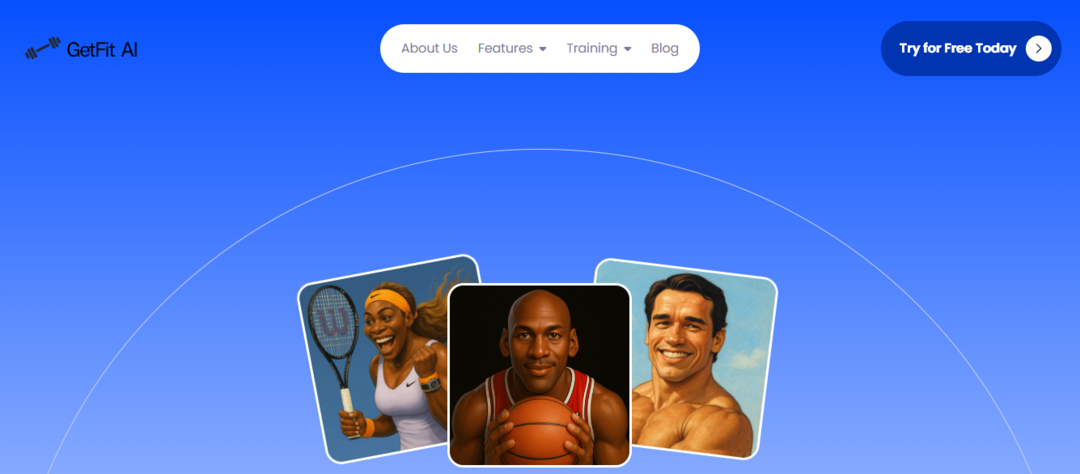
GetFit AI stands out as one of the best AI-driven fitness apps in 2025, offering users a unique training experience with workout routines inspired by world-class athletes, including Arnold Schwarzenegger, Kobe Bryant, Cristiano Ronaldo, and Serena Williams. What sets it apart is the ability to have conversational interactions with AI versions of these legends for personalized guidance, motivation, and adjustments.
Features
- AI-crafted personalized workout plans that adapt continuously based on your progress, health data, and fitness goals.
- Access to authentic training regimens modeled on elite athletes’ routines, tailored safely to your ability to minimize injury risk.
- Conversational AI coach that provides motivation, explains workout purpose, and answers form, pace, and technique questions.
- Detailed progress tracking, including strength curves, body composition trends, and performance markers, with insightful data visualization.
- Integration with smartphones and fitness trackers for smooth monitoring and automated plan adjustments.
Pros
- Offers unique access to elite athletic training methods alongside personalized coaching.
- AI mentorship feels authentic and adaptive, not generic or scripted.
- Tracks meaningful metrics to maintain honest progress and prevent plateaus.
- Provides motivational support and educational insights during workouts.
- Cost-effective alternative to personal trainers, delivering premium quality coaching.
Best For
- Fitness enthusiasts want to train using proven templates employed by elite athletes.
- Users seeking a highly personalized, data-driven workout experience.
- Those who want interactive AI coaching and form guidance.
- People aim to strike a balance between high-quality programming and injury prevention.
- Anyone keen to upgrade their workouts with science-backed progression and motivational support.
2. Cali Move App

The Cali Move App, crafted by experts Alex Lorenz and Sven Kohl, leads the market with its adaptive, science-based programs. It offers four distinct workout courses, including one that requires no equipment, accommodating a range of skill levels and schedules. Its mobility program adds flexibility training to complement strength gains.
Features
- A customizable progression algorithm adapts to the user's performance.
- Four specialized courses: Complete, Aesthetic, Zero (no equipment), Quick.
- The Supreme Mobility program offers enhanced flexibility.
- Crisp 4K instructional animations improve understanding.
- Intuitive, sleek interface with finely tuned workout break lengths.
3. Berg Movement App
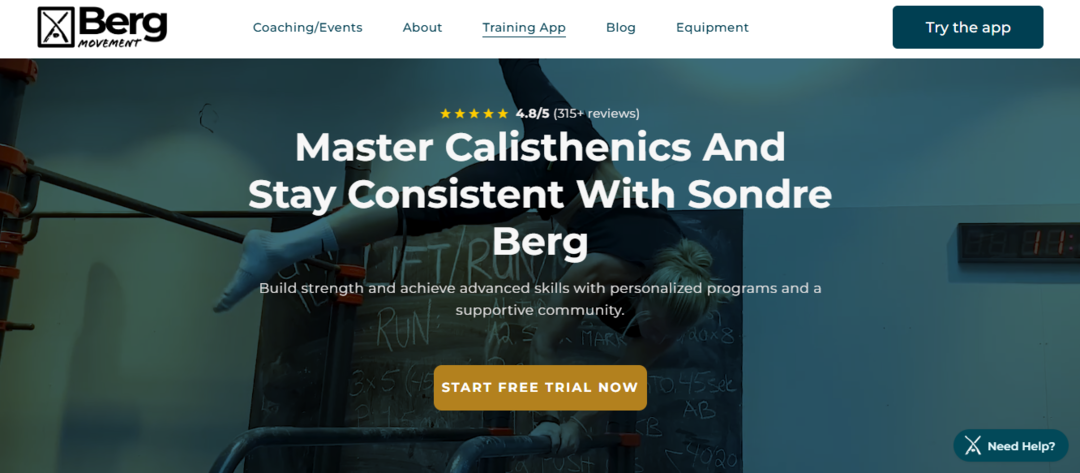
Berg Movement App emphasizes learning specific calisthenics skills, such as handstand push-ups, pairing strength with agility training. The app’s modular design enables users to create personalized routines by stacking skill blocks tailored to their skill level, making it ideal for those seeking focused development.
Features
- Modular routine blocks target individual skills progressively.
- Beginner to advanced pathways available for continuous challenge.
- Guided video tutorials narrated by Sondre Berg himself.
- Simple, clutter-free user interface enhances usability.
- Highly customizable skill and strength development options.
4. DIE RINGE App
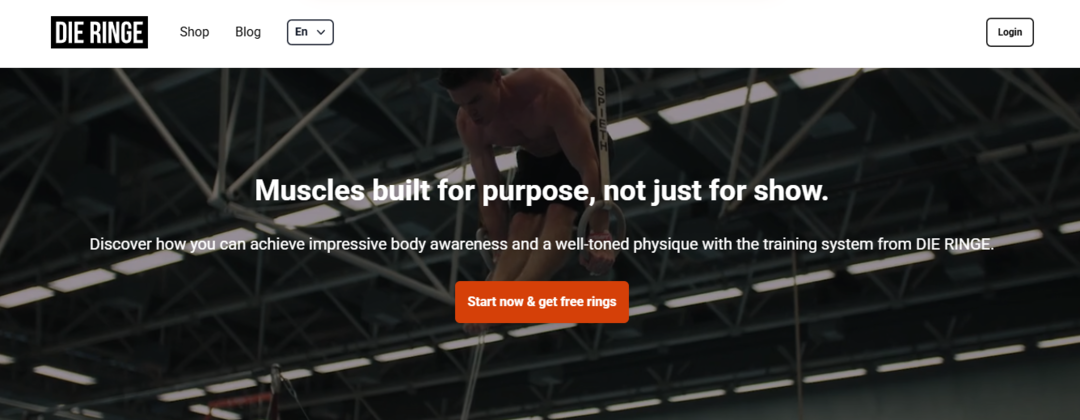
Designed for those seeking in-depth customization, DIE RINGE offers a comprehensive calisthenics experience, particularly for gymnastic ring training. It combines automated progression with manual control, backed by a massive exercise library and gamified achievements to motivate users.
Features
- Personalized workout plans based on initial assessment.
- Over 750 exercises available for advanced customization.
- Continuous progression updates based on workout feedback.
- Integrates gamification elements for motivation.
- High-quality video production enhances technique learning.
5. The Movement Athlete

Featuring cutting-edge AI technology, The Movement Athlete creates highly personalized training programs by analyzing initial capabilities, goals, and ongoing performance. The app maintains a clean UI, offering quick access to technical details without interrupting workout flow.
Features
- AI generates tailored routines that adapt over time.
- Performance feedback directly shapes future workouts.
- On-demand access to exercise explanations.
- Simple navigation with focus on action over theory.
- Suitable for users wanting a digital coach experience.
6. VahVa Fitness Movement 20XX
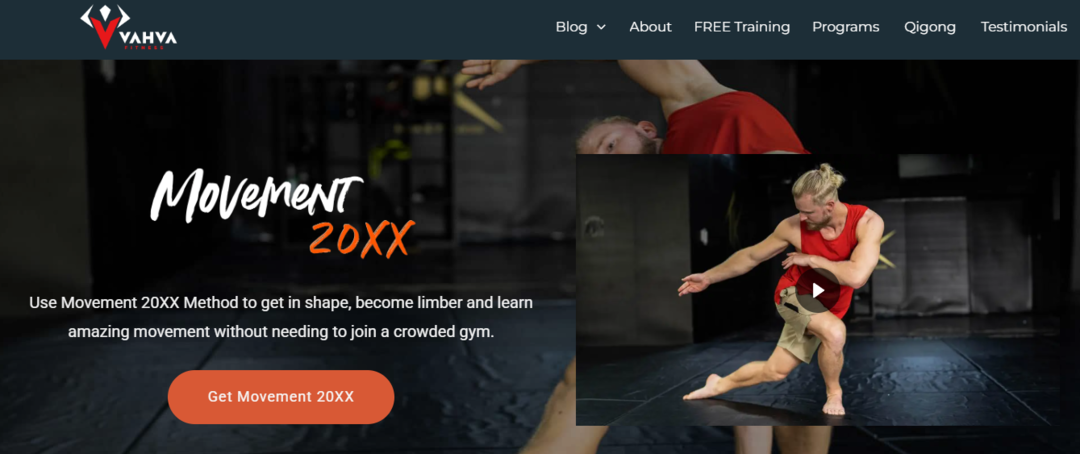
VahVa Fitness Movement 20XX demands grit, inspired by the Finnish concept of "Sisu." It blends strength, flexibility, and plyometrics into fluid "animal flows." This app is ideal for dedicated users seeking an intense and dynamic calisthenics experience.
Features
- Combines strength, flexibility, and plyometric training.
- Focus on animal flow sequences for smooth movement transitions.
- Challenging routines are suited for determined practitioners.
- Emphasizes mental toughness and hardiness.
- Encourages dynamic and smooth calisthenics flow.
7. Caliverse App

Caliverse combines a vast community of practitioners with over 100 pre-made workouts and more than 300 exercises. Designed for versatility, it offers equipment-free, primarily bodyweight workouts that appeal to users seeking social support for their fitness goals.
Features
- Extensive exercise library with over 300 options.
- More than 100 ready-made workouts.
- Lightweight app suitable for all levels.
- HD-quality instructional videos.
- Emphasis on community connection and sharing.
8. THENX
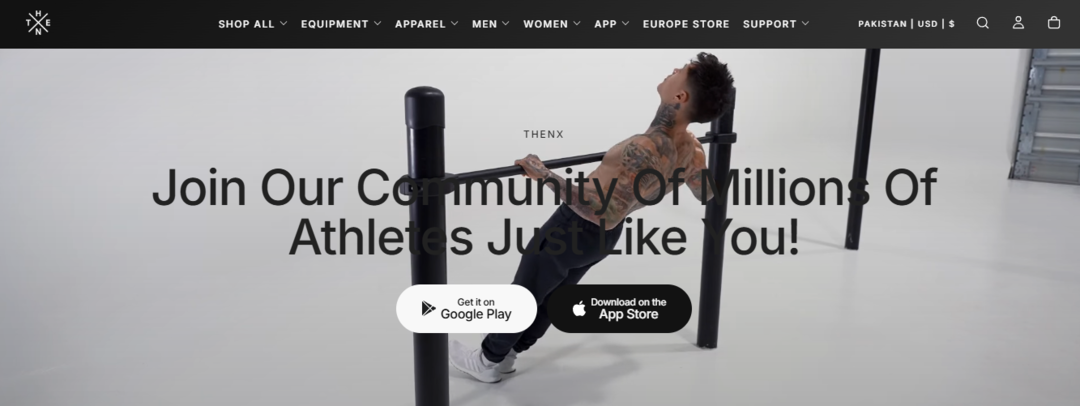
THENX is the creation of Chris Heria and fellow Calisthenics elites, designed to mirror professional training structures. It features progressive difficulty for each exercise and a minimalist design focused on clear, crisp video demonstrations.
Features
- Exercises are sorted by Easy, Intermediate, and Advanced levels.
- Training modeled after professional calisthenics regimens.
- Simple, minimalist user interface.
- High-definition workout videos.
- A clear progression system is built into reps and sets.
9. Calisthenics Family
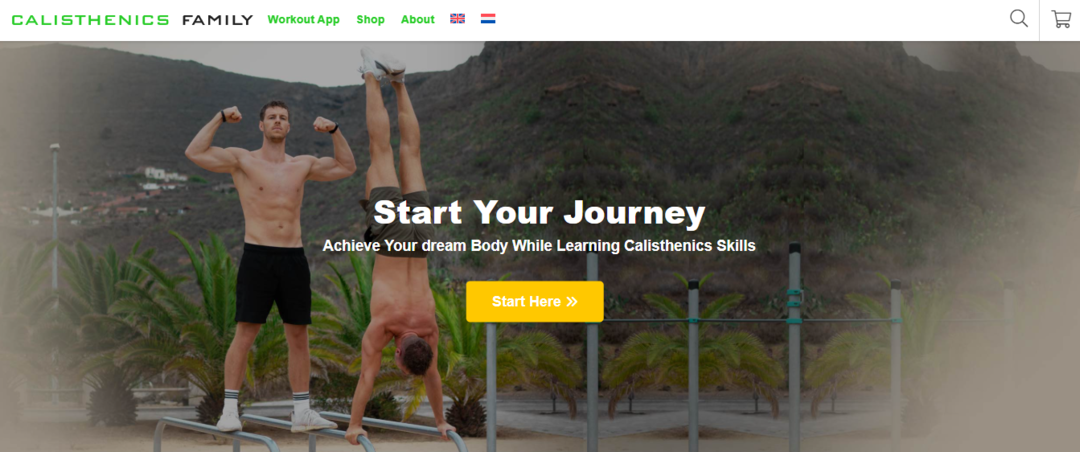
Built by the Woerdman brothers, this app supports skill mastery with over 80 preset workouts and more than 500 exercises. It emphasizes goal setting and gamification alongside a private social community and personalized coaching options.
Features
- Massive exercise library with over 500 exercises.
- Skill-driven workout plans and goal setting.
- A social community for support and achievement sharing.
- Gamification with rewards for progress milestones.
- Access to personal coaching and nutrition plans.
10. Madbarz App
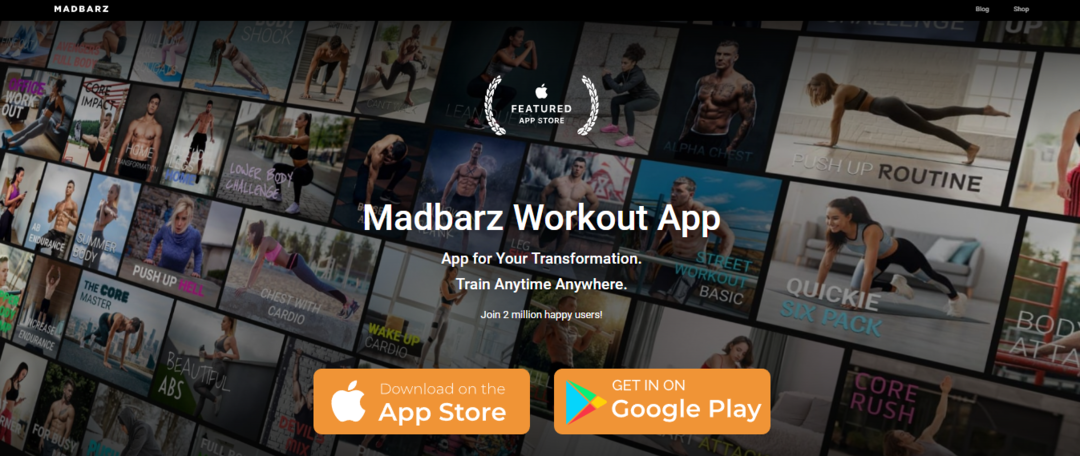
Madbarz offers a wide range of workouts and nutritional guidance, serving both beginners and experienced users. The free version has over 60 workouts, while paid features provide advanced courses and personalized nutrition plans.
Features
- 60+ free workouts designed for various goals.
- Nutritional plans are integrated into training.
- Customized workouts tailored by user input.
- Advanced 12-week courses for serious training.
- Focus on mindset and overcoming challenges.
11. Calistheniapp

Calistheniapp caters lovingly to beginners and experts alike, providing over 300 exercises categorized by focus and difficulty. Its color-coded routines make progression easy, including options for equipment mastery, such as gymnastic rings.
Features
- 300+ exercises with structured focus areas.
- Difficulty-coded routines help track progress.
- Routine customization to suit individual goals.
- Includes equipment-specific programs.
- Beginner-friendly and straightforward layout.
Most people rely on static templates or ad-hoc YouTube routines because they are familiar and easy to get started with. That approach breaks down as the goals scale, because programs do not recalibrate automatically, and form errors accumulate, increasing injury risk and frustration. Platforms like GetFit AI act as a bridge, translating elite athlete methods into continuously adapting, athlete-modeled bodyweight plans with conversational guidance, so trainees can benefit from high-level programming without hiring a personal coach.
How to choose in one sentence
If you want an elite athletic structure with the convenience of daily feedback, choose an adaptive, athlete-modeled coach. If you wish to focus on skill acquisition, opt for modular systems. If you want variety and a sense of community, consider selecting large libraries with social features.
That sounds like the end of the story, but there’s a surprising twist to why people actually stick with a calisthenics app.
Why Use a Calisthenics Workout App?

Apps remove the guessing and turn scattered practice into repeatable progress, cutting decision friction and making the next micro-step obvious. They also surface credibility quickly, so you spend time training instead of shopping for the right program.
How do apps stop decision fatigue and make daily practice automatic?
This pattern appears across both beginners and time-pressed athletes: choice overload can kill momentum. When you train by picking videos or building ad-hoc routines, the five minutes spent choosing become the five minutes you skip three nights in a row. Good calisthenics apps convert training into a single, predictable action, just like a GPS removes route decisions, so consistency becomes a habit, not an extra task.
What makes an app feel like an actual coach rather than a playlist?
Users want two things, in this order: clear next steps, and cues when to back off. That’s why programs that layer short, explicit cues, tempo counts, and failure-safe regressions keep people progressing without crashing into injury. This is especially important for athletes with hypermobility, where precise range-of-motion cues and rep limits are more crucial than volume alone; without them, flexibility can become a liability. Treat the app like a coach that talks to you between sets, not a library you consult between workouts.
Why do trust signals matter when choosing an app?
The easiest way to separate noise from legitimate tools is by focusing on the signal, not the hype. With over 1 million downloads and named one of the 11 Best Calisthenics Workout Apps in 2025, this gives you a quick, practical sense that many users have vetted the product, which reduces the risk of wasting months on something that sounds cool but doesn't scale. Likewise, a high app-store rating communicates that the program mechanics and UX are working for real people, and that matters when you need a reliable daily structure.
How do apps actually improve technique and safety without a trainer in the room?
Pattern recognition suggests that short, focused feedback loops are more effective than occasional, lengthy corrections. Apps that require short video check-ins or that allow you to log form notes create a cadence of micro-adjustments, which prevents minor errors from compounding into chronic issues. Think thermostat logic, not emergency surgery: minor, frequent corrections keep your movement patterns healthy, and they make long-term skill work, such as handstands and muscle-ups, less prone to accidents.
What about the overwhelm of choosing the right program?
It’s common to feel paralyzed by options when you want a simple “hit play” session that still adapts to progress. This confusion typically surfaces within the first two weeks of app trials, when users test three different plans and abandon all three. If your priority is adherence, favor tools that present a single adaptive track, one that adjusts intensity based on your recent sessions and recovery signals. That reduces cognitive load and increases the odds you show up on day 30.
Most people rely on playlists, saved routines, or endless comparison shopping because it is familiar and feels low-risk. That method works until training volume and goals scale, at which point sessions drift, progress stalls, and injuries crop up because nothing recalibrates automatically. Platforms like GetFit AI bridge that gap by translating athlete-modeled templates into adaptive bodyweight progressions and by offering conversational athlete personas you can query for pacing, regressions, and motivation, keeping training consistent as goals become more demanding.
How does personalization actually change results?
When a plan adapts to missed workouts, soreness, or faster progress, the math of training shifts. Instead of chasing arbitrary volume, you achieve progressive overload calibrated to your recovery, allowing gains to stack without burnout. That creates a simple, measurable curve for strength and skill: fewer plateaus, fewer painful reset weeks.
Why do people stick with a high-quality app long enough to see results?
A well-designed app couples frictionless daily sessions with visible micro-wins, so motivation becomes compound interest. Users who experience minor, tracked improvements over two to four weeks and then receive an adjusted plan that reflects those gains, report higher adherence. It feels like progress because it is measured and responded to, not hoped for.
That tidy logic sounds complete, but the part that breaks it for most people is one practical detail that few discuss.
Related Reading
- Best Fitness Apps
- How Many Pull Ups Should I Be Able To Do
- Average Bench Press By Age
- Average Grip Strength Male
- Average Bench Press
- How Much Does A Bench Press Bar Weigh
- Average Male Bench Press
- How Much Can The Average Man Bench Press
What Equipment Supports Your Calisthenics Workout App Routine
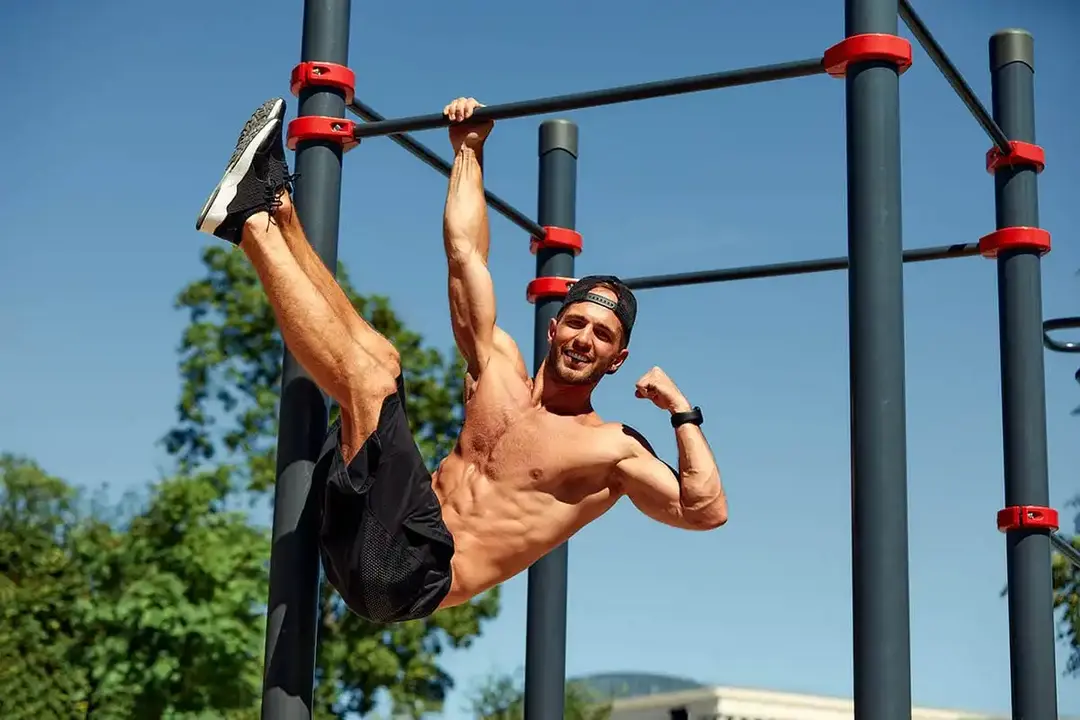
Your calisthenics app routine needs a compact, reliable kit that supports progression, safety, and portability, not a warehouse of gear. Choose items that allow the app to measure and adjust your load, such as changing band tension, ring height, or bar grips, so that the program can scale your workouts with precision.
What equipment should I favor for the space I actually have?
If space is tight, prioritize a portable pull-up solution and modular tools you can stow. For apartments, a reinforced doorframe or ceiling-mounted bar with clear load ratings is often the best compromise. Outdoors, a free-standing rig offers more freedom but comes at a higher cost and requires floor space.
Select rings with adjustable nylon straps and metal quick-links, which allow you to move them between mounts easily. Choose parallel bars with a low profile that store conveniently under a bed. Treat the mounting hardware as part of the purchase, not an afterthought; a cheap anchor that fails will cost you training days and confidence.
How can I effectively use resistance bands to accelerate my progress?
Use bands as a graded tool, not a gimmick. Start by labeling each band with its measured assistance or resistance, and log the band used for every assisted set. This way, the app can systematically reduce assistance as strength improves. According to Calisthenics, master your body. 75% of calisthenics practitioners use resistance bands as part of their workout routine, which underscores how central bands are to both assistance and overload strategies. Choose a set that covers a wide range and replace bands showing signs offray. Keep one heavy band for adding an eccentric load and one light band for subtle assistance; swap bands weekly so progress is quantitative, not guesswork.
What should I spend money on first, and what can I wait on?
Spend on anchors and safety features before toys that only add variety. An appropriately rated pull-up bar and secure ring straps are non-negotiable, followed by a versatile set of bands and a decent pair of parallel bars. Chalk, wrist wraps, and a sturdy plyo box or stackable alternatives are inexpensive ways to raise training quality without breaking the bank. Over time, allocate a budget toward items that reduce friction in daily training, because small barriers compound. Improper grips, poor rigging, or a missing band will stop sessions faster than a heavy traffic day.
Most trainees assemble gear by convenience because it feels cheap and straightforward, which is understandable. As workout intensity and skill work increase, this approach creates hidden costs: wasted purchases, inconsistent progress, and an increased risk of injury when equipment is mismatched to the movement. Platforms like GetFit AI's AI fitness app centralize equipment profiles and suggest exact resistance, ring height, and regression choices for each session, keeping training coherent and reducing wasted spending while preserving your autonomy.
How can I ensure the kit remains reliable so the app’s progressions remain valid?
Treat maintenance as part of your program. Inspect straps and carabiners monthly, store bands away from sunlight and heat, and replace anchors after any abnormal load event. Log replacements and hardware changes in the app so progression algorithms know when a sudden strength gain came from better equipment instead of real adaptation. Think of your kit like a musical instrument; if the strings are rusty or the tuning pegs slip, the song collapses, no matter how talented the player is.
Small habits change outcomes. Track which piece of equipment you used for each session, rotate assistance bands deliberately, and commit to one core setup that allows the app to measure progress consistently. Over time, that discipline compounds into measurable strength gains, which is why Calisthenics masters your body. Reports indicate that over 50% of users experience improved strength within 3 months of using calisthenics equipment, a practical signal that consistent, tracked practice with the right tools is effective.
Ready to train like the legends and finally achieve the body you've always wanted? GetFit AI's AI fitness trainer app enables you to follow the exact workout routines that helped Arnold Schwarzenegger, Kobe Bryant, Cristiano Ronaldo, Serena Williams, and over 11 other elite athletes become champions. You can also chat with them whenever you need guidance or motivation. Download the #1 rated AI fitness app for free today to get fit for less than the cost of a single month's gym membership. Because greatness isn't born, it's built one workout at a time.
The one gear choice you make today will quietly determine whether your next 90 days feel like a breakthrough or a string of missed sessions.
Key Criteria for Choosing a Calisthenics Workout App

Select an app that provides measurable, session-by-session adjustments and minimizes friction during workouts, and then test it against a brief checklist I use with clients. The right tool will combine reproducible programming, clear in-session cues, and progress signals you can trust without an expert at your elbow.
How can I determine if the plan actually suits me?
Look for explicit autoregulation mechanics, not marketing phrases. Good programs schedule brief retest blocks every 4 to 8 weeks, include planned deloads, and expose the rules that change your workload, for example, one-rep or tempo adjustments when you hit or miss target rep ranges. The real test is simple: miss two sessions and see whether the plan automatically reduces intensity or simply adds volume. If the plan never shifts after missed days, it is designed for the ideal trainee, not the real one.
What small UX details save workouts in practice?
Test the app in real-world conditions, fast and loud: start a workout with one thumb, display large countdown timers, let me skip or speed up a video without losing timer sync, and support offline mode so rain or subway commutes do not interrupt progress. These seemingly minor features reduce setup time and minimize focus loss, which is why users report a noticeable boost in efficiency. According to a Calisthenics master, users report a 30% increase in workout efficiency when using calisthenics apps in general. If the interface allows you to get into the session in under 30 seconds and keeps your hands free, you will train more often.
How should the app structure progressive overload and skill drills?
Prefer progressions that change measurable variables, such as leverage, tempo, assistance weight, hold duration, and rest density. For skill work, insist on micro-goals with objective pass criteria, such as a 10-second increase in hold time or a prescribed tempo for negatives, rather than vague “do harder variations.” Also, check for alternative loading paths, for example, a recommended tempo tweak when no extra weight is available. These options let the algorithm nudge you forward even when your schedule, equipment, or recovery changes.
Which progress metrics are actually meaningful?
Ignore vanity numbers and look for trendable metrics you can act on: weighted weekly volume equivalents, average RPE per session, percent of successful rep targets, longest hold times, and trend lines for session difficulty. Apps that let you export data or connect with a wearable win here, because you can validate trends outside the app. That matters because measurable practice works: according to Daily Burn, 75% of users reported improved strength and flexibility after using a calisthenics workout app for 3 months, which shows that tracked, consistent practice produces visible gains.
What should I expect from the community and support?
Most people start with tutorials and motivation; that is fine, but the hidden cost is when praise replaces technical feedback. The familiar approach is a lively forum and badges, which keep morale high but rarely correct form. Platforms like GetFit AI bridge that gap by pairing athlete-modeled programs with adaptive coaching logic and conversational coach personas, so the community motivates while the system adjusts the load and provides form cues when needed.
What are the quickest red flags to fail an app and move on?
If progression rules are opaque, if you cannot set your time constraints or equipment, if videos lack adjustable speed and clear fault cues, or if there is no way to view session trends, walk away. A product that treats progress as a black box wastes months of consistent effort. Think of it like buying a watch that looks great but has no backlight; it fails when conditions change.
You think that settles it, but there is one overlooked habit that determines whether an app helps you improve or just keeps you busy.
Related Reading
- Bench Press Standards
- Do Pull Ups Work the Chest
- Symmetric Strength
- Average Deadlift Weight
- Grip Strength Norms
- 1 Rep Max Chart
- Average Male Deadlift
- Good Bench Press Weight
Tips for Training Effectively with a Calisthenics Workout App
%2520(1).jpeg)
Treat the app as an instrument, not a playlist: layer your sessions into discrete skill, strength, and mobility blocks, use the app’s trend data to autoregulate load, and run short experiments to validate that the progression rules actually work for your body. Do those three things, and you will turn scattershot practice into repeatable, measurable progress without adding hours to your week.
How should I split skill work, strength work, and mobility in a single session?
Start skill work while you are freshest, because balance and coordination degrade with fatigue. Follow with targeted strength sets that utilize controlled tempo or added load, then conclude with a brief mobility or tissue-prep block that addresses any stiff areas you identified during the session. A practical template I use for time-crunched trainees is 10–12 minutes for skill practice, 12–18 minutes for 3 to 4 prioritized strength efforts, and 5–8 minutes of mobility, all within a single 30–40-minute window. Treat the mobility finish like tuning your instrument, not an optional add-on; that small habit keeps joints resilient and preserves technique.
How do I let the app’s data actually change what I do next?
Look beyond single workouts and read weekly trends: percent of successful reps, average session RPE, and most extended hold or max reps per movement. When we ran a six-week pilot with beginners, the pattern became clear: users who logged perceived effort and sleep alongside workouts recovered faster and hit weekly progression targets more often, because the plan adapted to missed reps and soreness. Use those trend signals to apply three simple rules: reduce intensity after two consecutive high-RPE sessions, insert a retest or deload week every 4 to 6 weeks if success rates fall, and extend micro-progressions when a skill shows inconsistent improvements.
Why push close to failure but not every set?
Failure is a tool, not the daily road map. Reserve true-to-failure sets for one strength movement per session and use cluster sets, slow eccentric contractions, or paused reps to achieve mechanical tension without compromising form. For skill work, stop 1 to 2 reps short of failure to preserve motor learning. If you want a practical boundary, treat RPE 8 as your default training zone for the week and use RPE 9 to 9.5 sparingly for planned intensity sessions. That approach provides progressive overload while minimizing technique collapse and overuse stress.
How can I prevent overuse injuries while maintaining efficiency?
Vary movement planes and loading pathways across the week so the same tendon or joint does not take repeated identical stress. It helps to alternate pulling, pushing, and vertical load days with deliberate offsets in grip, leverage, or tempo. Short mobility mini-sessions are more effective than one long session, and the app can help prime these into your day. According to MyFitnessCoach, 80% of users reported improved flexibility within 3 months of using the app. Adding consistent, brief mobility practice produces measurable flexibility gains; schedule that mobility to address movement faults highlighted by the app, rather than just generic stretching.
How can I maintain motivation when progress stalls?
Make the tracking actionable. Use two simple metrics that the app can display each week: a technical success rate for your targeted skill and a volume-equivalent for strength work. According to MyFitnessCoach, 90% of users found the app's progress tracking feature helpful for maintaining motivation, which is significant because visible trends reduce doubt. When the trend line flattens, test one variable for four weeks only, for example, increasing tempo tension, shortening rest periods, or switching to a different progression path. If the metric moves in the expected direction, keep it; if not, revert and try the next targeted tweak.
Most people stick with static templates because they feel safe. The hidden cost is predictable: templates pile on volume when life gets busy or when recovery lags, and small form errors compound into niggles. Solutions like GetFit AI bridge that gap by translating athlete-led frameworks into adaptive, autoregulated progressions and offering conversational coach personas that explain why a session changed, suggest regressions, or schedule a timely deload, so your plan responds to reality instead of assuming ideal conditions.
How can I test whether an app’s progression rules are actually effective for me?
Run a four-week validation cycle. Week one, establish baselines for a chosen skill and a strength metric. Weeks two and three, apply the app’s recommended progression without changing nutrition or sleep habits. Week four, retest the same metrics and compare the success rate and perceived recovery. Track only three variables: successful reps, average RPE, and sleep quality. If the success rate rises and RPE stays stable or drops slightly, the rules are working for you; if not, adjust one variable and run another cycle. Think of this like tuning a radio, a small knob turns until the signal clears.
What small habit separates people who plateau from those who keep improving?
Log one non-training metric each day, like sleep or soreness, and review it weekly. That single signal forces the plan to reconcile what you did with how you recovered, preventing the blind increase of load. It is a small discipline that compounds into consistency and fewer setbacks.
You think the idea of training with a legend is simple, but there is a surprising barrier most people never notice.
Related Reading
- Average Deadlift Weight Kg
- Best Hiit Workout App
- Average Bench Press By Age 16
- Best Free Workout Apps
- Average Deadlift Weight For Male
- Best Workout Apps
- Average Bench Press Kg By Age
- Best Calisthenics Workout App
- Best Workout Tracker App
- Best Gym Workout App
Make Your Favorite Athlete Your Fitness Trainer | Try GetFit AI's AI Trainer App for Free Today

Most of us default to fixed plans because they feel safe, and that familiarity can quietly stall progress. If you're looking for an elite structure that adapts to your life, consider GetFit AI, which pairs adaptive bodyweight programming with conversational athlete personas, making coaching feel personal and accessible. Seventy-five percent of users reported improved fitness levels within 3 months of using the app, according to the GetFit AI User Survey, and 90% of users recommend GetFit AI to friends and family.



.png)

